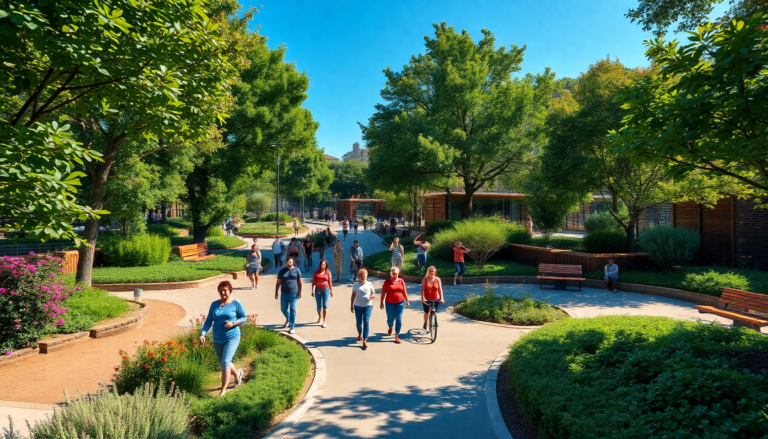Argomenti trattati
In the heart of Rome’s Municipio IV, a transformative project is breathing new life into the urban landscape: the Rambla di Pietralata. This sprawling 17,000-square-meter public space isn’t just a park; it’s a vibrant testament to sustainable mobility, social inclusion, and environmental enhancement. Much like its namesake in Barcelona, the Rambla invites residents and visitors alike to wander through its lush greenery, fostering a deep connection between nature and community. Isn’t it exciting to think about how urban spaces can be redesigned to enhance our everyday lives?
The Journey of Revitalization
The Rambla di Pietralata is the result of a comprehensive urban redevelopment initiative that emerged from an agreement signed back in 2015 between the city of Rome and the Ministry of Infrastructure and Transport. With a substantial investment of 5 million euros, this project has successfully transformed a previously neglected area into a thriving hub for social interaction, wellness, and outdoor activities. Just imagine the bustling life that now thrives where there was once only neglect!
At the heart of the Rambla lies a spacious square, positioned west of the historic Cave di Pietralata. This central piazza features an inclusive design and a variety of architectural elements—think canopies, staircases, fountains, and tree-lined areas. It serves as a modern gathering place, encouraging collective enjoyment and enhancing the urban landscape. Here, the air is filled with the scent of blooming flowers, and the sound of laughter reverberates off the newly installed structures, creating a lively atmosphere. Doesn’t that sound like a perfect spot to unwind?
The second section of the Rambla is dedicated to sustainable mobility and leisure activities. A pedestrian and cycling garden runs parallel to Via delle Cave di Pietralata, seamlessly connecting the university campus and the new market on Via Benedetti. This green corridor features bike paths, aromatic hedges, trees, and well-equipped green spaces—an essential green lung for the capital designed for both movement and relaxation. Have you ever felt the joy of cycling through a beautifully designed green space?
Environmental Mindfulness
Significant attention has been given to the environmental impact of this project. Most of the pavements, excluding those in the square and sidewalks, are constructed from permeable colored concrete, facilitating water absorption and creating a more sustainable urban environment. The irrigation system utilizes recycled water collected in underground tanks, illustrating a commitment to resource conservation and a harmonious balance between urban development and nature. It’s inspiring to see how cities can embrace sustainability, isn’t it?
Throughout the construction process, archaeologists uncovered valuable historical artifacts, prompting necessary adjustments to the original design to ensure their protection. These excavations revealed five distinct historical periods, weaving a narrative that connects the past with the present. Isn’t it fascinating how every layer of soil can tell a story?
A Bridge Between Past and Future
The Rambla di Pietralata stands as a remarkable example of urban renewal, serving as a bridge between ancient history and contemporary needs for livability and sustainability. As you stroll through its pathways, you can feel the essence of Rome’s rich history intertwined with the aspirations of its residents for a greener, more inclusive future. What stories do you think these paths hold?
This revitalized space not only enhances the quality of life for the community but also encourages a deeper appreciation for the environment and historical context. It invites everyone to come and experience its vibrant atmosphere, to engage with nature, and to celebrate the stories that every corner of this urban oasis has to tell. Are you ready to discover what lies within this beautiful blend of history and modernity?

